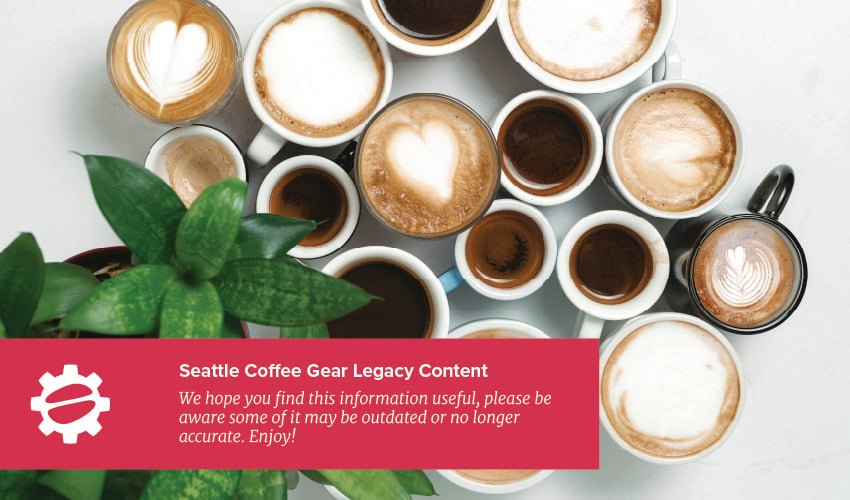| Feature |
Rancilio Silvia |
Crossland CC1 |
| Configuration |
-
Stock: Semi-Automatic. You'll need to dial in the grind & tamp, then manually start and stop the shot.
-
With PID Upgrade: You can turn this into an Automatic with the PID by leaving the coffee button on and using the PID to start and then automatically stop the extraction.
|
- Automatic
- You'll need to dial in the grind & tamp, but you can program shot infusion and duration for three different settings.
|
| Boiler |
- Single Boiler
- The 12 oz. brass boiler evenly distributes heat, so it will reach the desired temperature quickly. It will also maintain the temperature throughout multiple extractions and steam wand uses.
- It has three thermostats to monitor the espresso, steam and boiler heat to maintain the ideal temperature for your caffeinated drinks.
|
- Single Boiler + Thermoblock
- In addition to the stainless steel boiler that is controlled by the PID interface, the CC1 features a thermoblock-enhanced steaming.
- Rather than wait for the entire boiler to heat up to steam temperature, the thermoblock heats up the boiler water on the fly. This results in nearly endless steam (as long as you have water in your reservoir!) and no need to flush the boiler after you steam and before pulling your shots.
|
| Solenoid Valve |
- Yes
- The commercial-grade pressure relief system uses the three-way solenoid valve for easier clean up.
|
- Yes
- You won't get mucky pucks from this machine, as it's three-way solenoid valve sucks up any extra moisture and leaves you with a dry coffee ground puck every time.
|
| Water Source |
- Reservoir / Internal Tank Only
- The Silvia cannot be plumbed but has a 67 oz. removable water reservoir. Access is on the top of the machine and you can remove the tank or fill it while still in the Silvia. Without removing the reservoir's lid, you can't see how much water is left in there, so you'll need to remember to check that regularly.
|
- Reservoir / Internal Tank Only
- The CC1 cannot be plumbed but has a 2 liter internal water reservoir. Access is on the front of the machine, as you pull the reservoir out and to the side to refill. This enables you to keep an eye on how much water you have left in the reservoir.
|
| Pre-Infusion |
-
Stock: No. The stock Silvia doesn't have any pre-infusion capability, save for your manual switch on / off of the brew button briefly before beginning your full extraction.
-
With PID Upgrade: Yes. You can program pre-infusion time for one setting.
|
- Programmable
-
The CC1 offers programmable pre-infusion and wait time for three different settings. This duration will be included in the overall shot time.
|
| Programmable |
-
Stock: No. The Silvia has a more simple interface controlled by manual switches. It gives you a little less to tinker around with and is fairly easy to use.
-
With PID Upgrade: Yes. You can select the temperature, pre-infusion, wait time and overall extraction time for one setting.
|
- Yes
-
The Crossland CC1 integrated programming interface enables you to select temperature, pre-infusion, wait time and overall extraction time for three separate settings.
|
| Digital Interface |
-
Stock: No. Plain and simple, the Silvia does not have a digital interface or display and takes you back to it's roots of relying on the machine itself without you adjusting it to give you your ideal cup o' joe.
-
With PID Upgrade: Yes. You'll have a digital read out of the temperature on the outside of the boiler, pre-infusion and shot time.
|
- Yes
-
The digital interface displays your machines brew temperature, shot timer, boiler temperature and your programmed settings.
|
| Thermostat |
-
Stock: Standard, bi-metal thermostat, which can have up to a 20F degree differential, depending on where it's at in its heating cycle. To work with this, temperature surfing is essential for brewing your espresso at the ideal temperature.
-
With PID Upgrade: Electronic. This will override the stock thermostat and maintain the boiler at the temperature you have selected in the interface. Note that it reads the outside of the boiler, so the set temperature should be roughly 20 degrees higher than your target shot temperature.
|
- Electronic
- The integrated PID allows you to set the temperature for three different settings. Additionally, it display actual boiler temperature vs. the temperature at the outside of the boiler.
|
